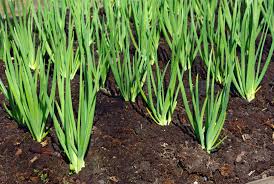Onions are a staple in kitchens worldwide, adding depth and flavor to countless dishes. If you love fresh produce and want to skip the store-bought onions, growing your own can be both rewarding and practical. With the right techniques, you can cultivate an abundant supply that lasts throughout the year. Whether you’re a seasoned gardener or just starting, these 10 tips will help you grow the perfect onions in your backyard.
1. Choose the Right Variety
Onions come in several varieties, such as yellow, red, white, shallots, and scallions. The climate in your area will determine the best type to plant. For southern regions, short-day onions thrive, while northern areas are suited to long-day onions. If you live in between, intermediate-day onions will work best.
2. Start with Quality Seeds or Sets
Start your onion-growing journey with either high-quality seeds or onion sets (small, dried bulbs). Seeds offer a wider variety and better disease resistance, while sets provide a quicker harvest. Always purchase from reputable suppliers to ensure strong, healthy plants.
3. Prepare the Soil Properly
Onions prefer loose, well-drained, and nutrient-rich soil. Improve your soil by adding compost or aged manure before planting. A soil pH of 6.5 to 6.8 is ideal. Till the soil thoroughly to avoid compaction, which can hinder onion growth.
4. Space Your Plants Correctly
Proper spacing ensures onions have enough room to grow to their full potential. Space seeds or sets about 4-6 inches apart in rows that are 12-18 inches apart. This allows for better air circulation, easier weeding, and healthier plants.
5. Water Consistently, but Don’t Overwater
Onions need consistent moisture, especially in the early stages. Aim for about an inch of water per week, including rainfall. However, be careful not to overwater, as this can cause root rot. Well-drained soil will help prevent this issue.
6. Use Mulch for Moisture and Weed Control
Mulching with organic materials like straw, bark, or compost helps retain soil moisture, regulate temperature, and suppress weeds. This reduces competition for nutrients and water, allowing your onions to thrive.
7. Fertilize Appropriately
Onions need a balanced diet, particularly phosphorus, potassium, and nitrogen. Fertilize the soil before planting and supplement with nitrogen-based fertilizers during the growing season. This encourages strong, healthy growth and large, flavorful bulbs.
8. Watch for Pests and Diseases
Onions can be vulnerable to pests like onion maggots and thrips, as well as fungal diseases like downy mildew and blight. Regularly inspect your plants for signs of distress. If problems arise, treat them promptly with organic or chemical solutions to prevent damage.

9. Harvest at the Right Time
Onions are ready to harvest when the tops start to fall over and yellow. Gently lift the bulbs, remove excess soil, and let them cure in a warm, dry place with good airflow for a few weeks. This drying process helps the outer skin become papery, perfect for storage.
10. Store for Long-Term Use
Once cured, store onions in a cool, dry place with good air circulation to prevent moisture buildup. You can braid them or hang them up for ventilation, or use mesh bags or bins for storage. Properly stored onions can last for months, providing a steady supply until the next harvest.
By following these tips, you’ll transform your onion-growing efforts into a flourishing and cost-effective experience. With a little patience and care, you’ll be rewarded with an abundant harvest that reduces your need for store-bought onions and enhances your gardening skills. So, roll up your sleeves, and get ready to enjoy the sweet, crisp taste of homegrown onions all year long!
